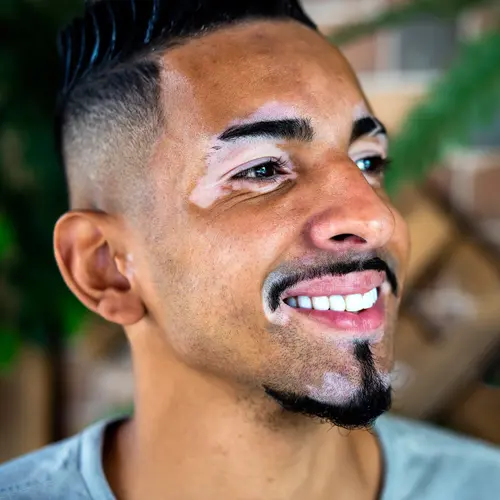Rosacea is a skin condition that causes your face to appear red. It makes you look like you’re blushing, and you may also get skin bumps that resemble acne.
Laser treatments can help ease your symptoms. Here’s what you need to know about the pros, cons, risks, and benefits.
What Is Rosacea?
Rosacea is an inflammatory condition that makes the blood vessels on your face visible. Doctors aren’t sure what causes it, but they suspect that genes, mites, bacteria, and sun damage play roles.
If you have rosacea, you may also get symptoms like:
- Flushed cheeks, nose, chin, and forehead
- Small, acne-like bumps on your face
- Patches of dry skin
- Enlarged pores
- Swollen nose
- Bumps on your eyelids
- Problems with seeing
- Eye problems such as red, itchy eyes, and swollen eyelids
Rosacea often runs in families and is more common if you:
- Have or had severe acne
- Smoke
- Are female
- Are between 30 and 50 years old
- Have fair hair, light skin, and light eyes
There’s no real cure for rosacea, but doctors prescribe certain medications to treat symptoms:
- Azelaic acid, which comes in gel and foam forms and clears up redness and bumps
- Topical antibiotics like doxycycline, minocycline, and metronidazole, which kill bacteria and suppress swelling and redness
- Isotretinoin, an acne drug that can help get rid of skin bumps
- Antibiotics you take by mouth, such as tetracycline
Laser Treatments for Rosacea
In recent years, doctors have started using laser treatments to treat rosacea.
Generally, people with rosacea try laser therapy only after other treatments don’t work for them. Keep in mind that laser treatment may not be the best option for you. Speak to your doctor before deciding how you should treat your rosacea.
If you choose to use laser treatments, your doctor will use the laser’s wavelength to collapse your visible blood vessels so they’re no longer visible. This bloodless and mostly painless treatment can greatly reduce redness, thick skin, and visible blood vessels.
The most common types of laser treatments include:
CO2 (Ablative) Laser
- Used to treat rhinophyma (bumps or thickened skin on your nose) caused by rosacea
- Has the ability to reshape your nose by removing the thin outer layer of skin and heating the underlying skin to stimulate the growth of new skin
Pulsed-Dye Laser
- Also known as V-Beam and Cynosure
- Doctors use light to lower inflammation caused by visible blood vessels
- Red blood cells absorb the laser, which destroys the lining of visible and inflamed blood vessels
YAG Laser
- Targets visible blood vessels
- Whittles down excess tissue that can make your nose look bulbous
- Shrinks pores
Intense Pulsed Light Therapy
- This type of therapy is not a true form of laser treatment. Instead, it uses multiple wavelengths of light to target red areas on your skin.
- It can get rid of uneven patches of pigmentation on your skin and reduce redness.
Cost of Laser Treatments
Laser treatment for rosacea can be expensive, especially since you’ll probably need to have several sessions.
The cost also varies depending on the severity of your rosacea symptoms. The more severe your symptoms, the more sessions you’ll probably need. Typically, people with rosacea need anywhere from two to eight sessions spaced around 4 weeks apart for the best results.
How Effective Are Laser Treatments for Rosacea?
Laser treatments are a good alternative to the medications doctors usually prescribe for rosacea.
In one study, 50% of participants had improved symptoms after going through YAG laser treatment.
Another study showed how pulsed-dye laser therapy for rosacea was “worthwhile” for all the study’s participants. The mean score for overall improvement was 4.4 out of 5 as judged by the participants themselves and 4.3 out of 5 as assessed by close friends or family members of the participants.
A 2008 study also showed the effectiveness of intense pulsed light therapy in reducing flushing and other symptoms of rosacea. Specifically, more than 50% of improvement was observed for the vast majority of participants.
In addition to reducing redness and other symptoms, laser treatments can:
- Ease skin irritation
- Make your skin smoother
- Boost collagen production in your body, which can make your skin more elastic and reduce wrinkles
Are There Risks to Using Laser Treatments?
Before you get laser treatment for rosacea, it’s important to talk to your dermatologist about:
- Your medical history
- Which medications you take, such as aspirin and warfarin
- Whether you bruise easily or are sensitive to light
After getting laser treatment, you may get these common side effects:
- Increased redness, which will fade within 2 weeks
- Rashes
- Itchiness
- Skin swelling
- Mild bruising
Laser treatment is largely painless, although some people may have mild bruising or other symptoms listed above. If these symptoms last for more than a few days or you feel like your skin is burning after laser treatment, contact your doctor right away.

